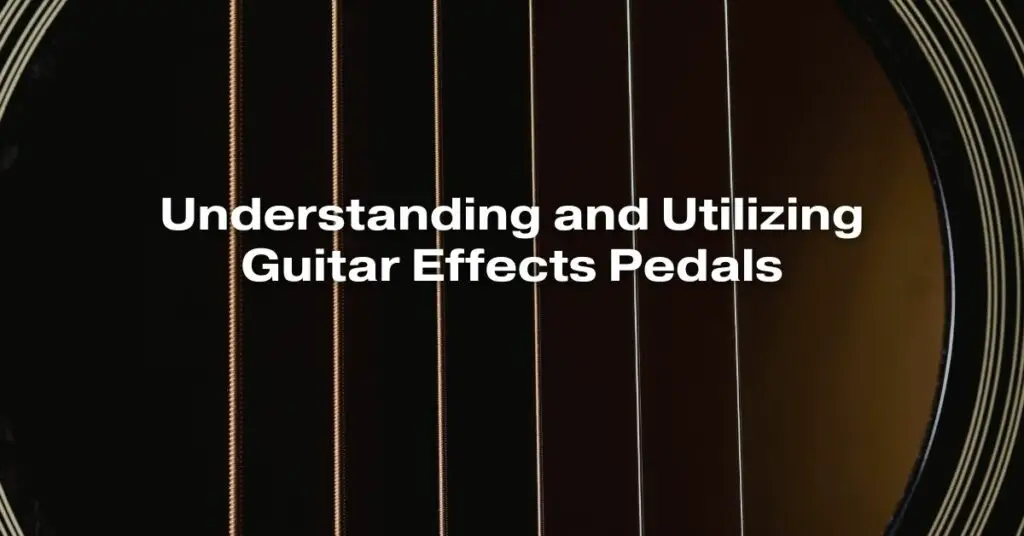Guitar effects pedals have revolutionized the way musicians create and perform music. These small devices, often underestimated for their size, have the power to transform a simple guitar sound into a complex, multi-layered masterpiece. Understanding and utilizing guitar effects pedals can greatly enhance a musician’s creativity and add a new dimension to their music. In this comprehensive guide, we will delve into the world of guitar effects pedals, exploring their types, functions, and tips on how to use them effectively.
I. Types of Guitar Effects Pedals
Distortion and Overdrive Pedals: These pedals add grit and crunch to the guitar tone, simulating the sound of an overdriven tube amplifier. They are essential for rock, metal, and blues guitarists.
Delay Pedals: Delay pedals create echoes and repetitions of the guitar sound. They can add depth and spaciousness to the music, creating a sense of ambiance.
Reverb Pedals: Reverb pedals simulate the natural acoustics of different environments, making your guitar sound as if it’s played in a large hall, a room, or even a cathedral. Reverb adds a sense of space and lushness to the sound.
Modulation Pedals: Modulation pedals include effects like chorus, phaser, and flanger. These pedals alter the sound by modulating certain frequencies, creating a swirling, pulsating effect that can add character and depth to the guitar tone.
Wah-Wah Pedals: Wah-wah pedals create a vowel-like sound by altering the EQ of the guitar signal. Musicians use them to create expressive, vocal-like tones, often associated with funk and rock genres.
Pitch Shifter and Octave Pedals: These pedals change the pitch of the guitar signal. Pitch shifters can create harmonies or detune the guitar, while octave pedals generate tones one or two octaves lower or higher than the original note.
Looper Pedals: Looper pedals record and play back a guitar riff or phrase, allowing musicians to layer different parts of a song on top of each other. They are excellent tools for solo performers and songwriters.
II. How to Use Guitar Effects Pedals Effectively
Experimentation: Don’t be afraid to experiment with different pedal combinations. Mixing and matching pedals can lead to unique and unexpected sounds. Spend time exploring the pedals’ settings and understanding how they interact with each other.
Signal Chain: The order in which you connect your pedals (signal chain) greatly influences the final sound. A typical signal chain starts with distortion/overdrive, followed by modulation effects, delay, and reverb. However, there are no strict rules; feel free to rearrange the pedals to achieve the desired sound.
Expression Pedals: Some effects pedals, like wah-wah and volume pedals, respond to the movement of an expression pedal. Mastering the control of these pedals with your foot can add a dynamic element to your playing.
Presets and Preset Management: Many modern multi-effects pedals allow you to save presets. Experiment with creating presets for different songs or styles, making it easy to switch between sounds during live performances.
Practice with Discipline: While effects pedals can enhance your sound, they can’t compensate for lack of practice. Practice your playing techniques and musicality alongside experimenting with different effects to truly master their potential.
III. Tips for Beginners
Start Simple: If you’re new to effects pedals, begin with one or two basic pedals like overdrive or delay. Familiarize yourself with their functions and gradually expand your collection as you gain experience.
Read Manuals: Each pedal comes with a manual that explains its features and settings. Take the time to read these manuals to understand the full capabilities of your pedals.
Watch Tutorials: There are countless online tutorials and demonstrations available on platforms like YouTube. Watching experienced musicians and sound engineers can provide valuable insights and inspiration.
Ear Training: Develop your ear to identify different effects and their settings in songs you like. This skill will help you replicate sounds and create your unique tones.
Conclusion
Guitar effects pedals are powerful tools that can transform your playing and elevate your musical expression. Understanding the different types of pedals, their functions, and how to use them effectively can open up a world of creative possibilities. Whether you’re a beginner or an experienced musician, experimenting with these pedals can lead to unique sounds and inspire innovative musical compositions. So, dive into the world of guitar effects pedals, unleash your creativity, and let your music take flight.


